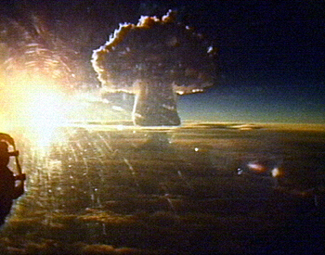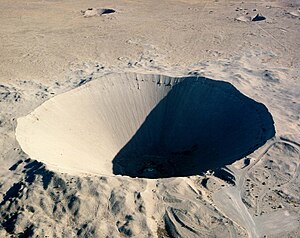After Garage Selling I ran across
Collecting McCoy, Hull and Roseville Pottery
Finding, Identifying and Buying Vintage American Pottery
- Dec 12, 2008
- Vickie Britton

- Hull Vase - Loretta Jackson
The late part of the 1800s through the mid-1900s saw a renaissance in pottery-making. Ohio-based companies McCoy, Roseville, and Hull started out by producing wares for daily use, then began making art pottery. Vintage planters, cookie jars, and art vases are sought after by collectors.
McCoy
The McCoy brand of pottery was established in 1910 by Nelson McCoy and his father and several stockholders in Roseville, Ohio. From 1929, the company began marking its goods. After 1933, the company was known as the Nelson McCoy Pottery Co. The McCoy family operated the company for 57 years. In 1967 it was sold, but Nelson McCoy, Jr. remained as president. After his retirement in 1985, the company was sold again. In the course of its eighty years of business, McCoy produced a variety of pieces that are collector’s items today.
How to Tell a Real McCoy
McCoy’s colorful pottery was produced into the 1990s. Some desirable pieces are vintage cookie jars and planters, vases and pitchers. Common marks from 1939 to the present include the word McCoy, often in combination with USA. There have been many knockoffs and fake McCoys, so it is wise to take a close look before purchasing higher-priced items. Many nice pieces can be purchased for fifty to a hundred dollars.
Roseville
The Roseville Pottery Company was established in 1890 by J. F. Weaver in Roseville, Ohio The company began by selling utilitarian pieces. In 1898 the business was moved to Zanesville, Ohio, and Roseville began producing several lines of art pottery. These were decorated with a variety of patterns, many of them inspired by nature. All Roseville pieces are collectible, but artist-signed ones are worth more than the unsigned ones. Popular collectible patterns such as the Pinecone, Wisteria and Sunflower may sell for several hundred dollars. Less expensive pieces of Roseville pottery may be purchased for around fifty dollars.
Many of the pieces are clearly marked Roseville on the bottom. However, a variety of different marks were used through the decades, and some pieces are not marked at all.
Hull Pottery
Hull Pottery got its start in Crooksville, Ohio, in 1905. The A. E. Hull Pottery Company’s early lines consisted of utilitarian ware. In the 1920s the business expanded and began to enter the art pottery market. The best Hull products were made between the 1930s through the 1950s. In 1950, the plant was destroyed by flooding and fire. It was rebuilt and resumed business through the next two decades as The Hull Pottery Company. Hull pieces are often clearly marked Hull or Hull USA on the bottom.
Hull developed art pottery lines which had mostly floral themes. They were also known for pastel matte planters and flower vases. Most good Hull pieces cost a hundred dollars or more. The Red Riding Hood line is one of the most collectible. Little Red Riding Hood cookie jars, if authentic and in excellent condition, may be worth over a thousand dollars.
Where to Find Vintage Pottery
Vintage pottery can be found in antique stores, flea markets, at garage sales, and on eBay. Antique stores usually have the best quality, but also the highest prices. Sometimes an amazing bargain can be picked up at the local flea market or garage sale if the buyer knows what to look for. EBay also has many listings, but the buyer must beware of fakes and misrepresentations.
Buying Vintage Pottery
Well-Known Names in Vintage Pottery
- McCoy
- Roseville
- Hull
- Weller
- Rookwood
- Van Briggle
- Fulper
Pottery is worth much more if it is in mint condition. Inspect carefully and avoid purchasing pieces with:
- hairline fractures
- crazing (fine cracks indicating disintegration)
- suspicious markings—bring a collector’s book for comparison
Sources:
Hanson, Bob, Jane. American Art Pottery Collection: Identification and Values. Collector Books, 2006.
Kovel, Ralph. Kovel's American Art Pottery: The Collector's Guide to Makers, Marks ,and Factory Histories. Random House Reference, 1st edition, 1993.
Glass and Pottery Seller's Association Glossary of Flaws and Damage
For other articles on glassware pottery and ceramics see
Read more at Suite101: Collecting McCoy, Hull and Roseville Pottery: Finding, Identifying and Buying Vintage American Pottery | Suite101.com http://www.suite101.com/content/collecting-mccoy-hull-and-roseville-pottery-a74521#ixzz1TQuHwgpF










